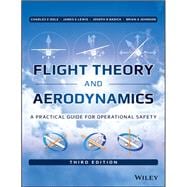Flight Theory and Aerodynamics is the essential pilot's guide to the physics of flight, designed specifically for those with limited engineering experience. From the basics of forces and vectors to craft-specific applications, this book explains the mechanics behind the pilot's everyday operational tasks. The discussion focuses on the concepts themselves, using only enough algebra and trigonometry to illustrate key concepts without getting bogged down in complex calculations, and then delves into the specific applications for jets, propeller crafts, and helicopters. This updated third edition includes new chapters on Flight Environment, Aircraft Structures, and UAS-UAV Flight Theory, with updated craft examples, component photos, and diagrams throughout. FAA-aligned questions and regulatory references help reinforce important concepts, and additional worked problems provide clarification on complex topics.
Modern flight control systems are becoming more complex and more varied between aircrafts, making it essential for pilots to understand the aerodynamics of flight before they ever step into a cockpit. This book provides clear explanations and flight-specific examples of the physics every pilot must know.
- Review the basic physics of flight
- Understand the applications to specific types of aircraft
- Learn why takeoff and landing entail special considerations
- Examine the force concepts behind stability and control
As a pilot, your job is to balance the effects of design, weight, load factors, and gravity during flight maneuvers, stalls, high- or low-speed flight, takeoff and landing, and more. As aircraft grow more complex and the controls become more involved, an intuitive grasp of the physics of flight is your most valuable tool for operational safety. Flight Theory and Aerodynamics is the essential resource every pilot needs for a clear understanding of the forces they control.








